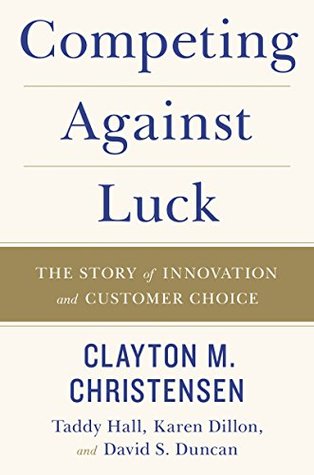More on this book
Community
Kindle Notes & Highlights
Read between
October 19 - November 9, 2019
Our understanding of the Job to Be Done can always get better. Adopting new technologies can improve the way we solve Jobs to Be Done. But what’s important is that you focus on understanding the underlying job, not falling in love with your solution for it.
Managers and industry analysts like to keep their framing of competition simple—put like companies, industries, and products in the same buckets. Coke versus Pepsi. Sony PlayStation versus Xbox. Butter versus margarine.
Because if you don’t know what you’re really competing with, how could you ever hope to create something that consumers will choose to hire over all other potential solutions?
Jobs Theory is not useful if there is no real struggle for a consumer or the existing solutions are good enough.
Cost or efficiency is not a core element of a job.
A well-articulated job provides a kind of “commander’s intent,” obviating the need for micromanagement because employees at all levels understand and are motivated by how the work they do fits into a larger process to help customers get their jobs done.
Managers don’t need to enforce the rules. They understand the “commander’s intent”—a military term that explains why soldiers up and down the ranks know how to make the right choices absent a specific order. They
Until they zoned in on the Job to Be Done, Huber and his team were picking and choosing among all kinds of cool bells and whistles that OnStar technically could offer.
‘Let’s get back to the Job to Be Done. What are our customers hiring us to do?’


